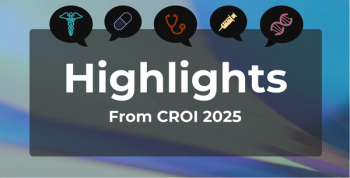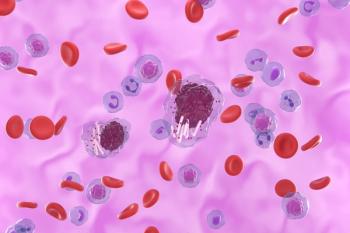
Interferon Cuts Risk of MF—but Not Thrombosis—in Young Patients With MPNs
Key Takeaways
- Early interferon therapy reduces secondary myelofibrosis risk in young ET and PV patients.
- Cytoreductive drugs do not lower thrombotic event risk in young patients.
The findings highlight the limits of risk stratification algorithms based on data from older patients.
Early use of interferon therapy reduces the risk of secondary
The retrospective analysis,
Most people who are diagnosed with ET and PV are diagnosed in the sixth decade of life, explained corresponding author Jean-Christophe Ianotto, MD, PhD, of France’s University Hospital Center of Brest, and colleagues. However,
Among those, Ianotto and colleagues said, interferon “uniquely” demonstrates “long-term disease modification potential, including allele burden reduction and the possibility of treatment discontinuation.”
In the new study, the investigators wanted to evaluate those recommendations in the context of young patients. They said the inquiry is particularly important given that younger patients have the potential to live much longer with the disease than patients diagnosed later in life.
The authors retrospectively analyzed the cases of 348 patients who were diagnosed with myeloproliferative neoplasms before the age of 25. Most patients (n = 278) were diagnosed with ET; the rest (n = 70) had PV. The patients had a median age of 20 years at diagnosis and a median risk of 1.9 thrombotic events per 100 patient-years. Ianotto and colleagues said the baseline thrombotic risk came as a surprise.
“This rate is comparable to those reported in contemporary cohorts of older patients with more comorbidities, although the time to the first thrombotic event appears to be longer in our cohort (median time of 4 years for ET and 3 years for PV) compared to adult cohorts (median time of 0.9 years for ET and 0.3 years for PV),” they wrote.
Of the 342 patients for whom antithrombotic treatment data were available, 83% underwent antithrombotic treatment. Specifically, 70% of patients with ET and 63% of patients with PV received antiplatelet drugs alone. Nine percent of patients with ET and 19% of patients with PV received anticoagulants. Two percent of patients with ET and 7% of patients with PV were on dual treatment.
Two-thirds of patients were treated with a cytoreductive therapy (66.5% of patients with ET and 74.3% of patients with PV).
When Ianotto and colleagues examined patient outcomes, they found that elevated white blood cell counts (>11 x 109/L; HR, 2.7; P = .012) and the absence of splenomegaly at diagnosis (HR, 5.7; P = .026) were risk factors for thrombosis. However, they said conventional risk scores were not predictive of thrombosis risk in this cohort. They also found that cytoreductive therapy did not reduce the risk.
“In light of our results, the early use of pharmacological cytoreduction solely for the purpose of reducing thrombotic risk must be weighed against the risks and complications associated with the treatment, as we did not demonstrate any benefit from its use,” they wrote.
In terms of sMF, the investigators found the overall incidence was 0.7 per 100 patient-years, with CALR mutation (HR, 6.0; P < .001) and a history of thrombosis (HR, 3.8; P = .015) identified as risk factors. While cytoreductive therapy did not impact thrombosis risk, it did significantly improve myelofibrosis-free survival when used as a first-line therapy when compared with other therapies or no cytoreductive therapy (P = .046).
Ianotto and colleagues said randomized trials would be needed to confirm their findings, and they said there is a need for research with a longer follow-up period.
However, the investigators said their findings highlight the limitations of existing risk-stratification algorithms as they apply to adolescents and young adults with ET and PV. They said there is also a need for therapies to better address the risk of disease progression in this group, particularly given their longer life expectancy compared to older patients.
References
- Beauverd Y, Ianotto JC, Thaw KH, et al. Impact of treatment for adolescent and young adults with essential thrombocythemia and polycythemia vera. Leukemia. 2025;39(5):1135-1145. doi:10.1038/s41375-025-02545-2
- Barzilai M, Kirgner I, Avivi I, et al. Characteristics and outcomes of young adults with Philadelphia-negative myeloproliferative neoplasms. Eur J Haematol. 2019;102(6):504-508. doi:10.1111/ejh.13232
Newsletter
Stay ahead of policy, cost, and value—subscribe to AJMC for expert insights at the intersection of clinical care and health economics.









































